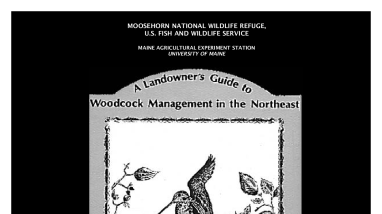For nearly five decades wildlife biologists have studied the life history of the woodcock and the factors affecting its welfare. The ultimate aim has been to insure that woodcock can be maintained in adequate numbers, in the face of increasing human demands on natural resources, and with decreasing wildlife habitat. From the biologists' studies several important publications have resulted, especially in the northeastern states, which are in the heart of woodcock breeding range. These publications emphasized the biology of the bird and its environmental needs. They treated only in general terms the specific steps that the small landowner could take to enhance his property for woodcock by economically feasible methods. This booklet is aimed at filling that gap. It is for the landowner who is not a biologist, but who wants to do something for woodcock on his or her own land.
Publication date
Type of document
Report
Program
Species

